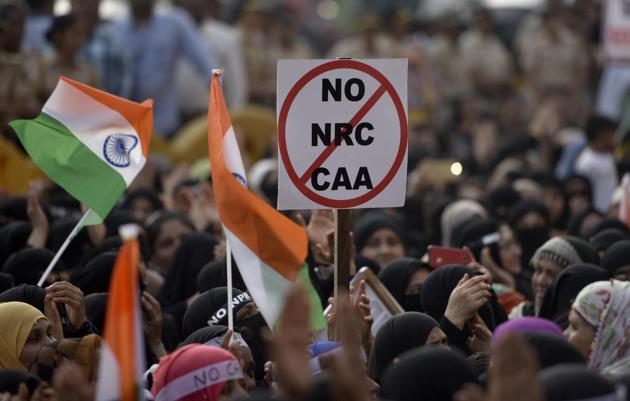The anti-CAA protests have hit a wall. Here is why
Will protests remain an expression of citizen’s dissent or evolve into a political movement? Protesters must decide
The widespread and sustained protests against the discriminatory Citizenship (Amendment) Act (CAA) have altered the political landscape in multiple ways, not least by dispelling the gloom which had descended on the opposition (political and civil society) after the Lok Sabha elections. The lakhs of demonstrators, waving the Tricolour and reciting the preamble to the Constitution, have been able to infuse a sense of freshness and idealism in a foundational value — secularism — which had seemingly lost all resonance in our polity. And in protests after protests, we have witnessed the potential of new leadership, both assertive and articulate.

However, we are at an impasse. The logic of protests requires a receptive government, to acknowledge dissent, and open dialogue to build a fresh consensus. However, the government has not only chosen to disregard the protests; it has chosen to also use these as a counterpoint to consolidate majority. Through the last month, there was a sense of build-up for the Supreme Court (SC) hearing, but those hopes stand belied, for now, with the court refusing to stay the CAA law in the interim. Procedural delays on key cases — be it demonetisation, habeas corpus and communications shut down petitions in Kashmir, and now the CAA — have ended up aiding the executive, leaving protesters with limited choices.
Hence the question, which kept recurring in the background of the protests — what next — has acquired urgency. The protests have some key characteristics which bear discussion. First, the protests have been avowedly leaderless. The protests used social media to “announce” venues where people spontaneously showed up. In places where the protests have been continuous, such as Shaheen Bagh in Delhi, a local organising committee has come up to manage the logistics. However, if the crowds don’t show up tomorrow in response to social media calls, there is no organisational structure to mobilise them.
Second, while the language and manner of protests across the country may be similar, the protests themselves are separate and autonomous. Over time, a collective platform has been attempted, but this has not resulted in leadership or organisation. This leaderless and organisation-less “strategy” may have been necessitated in the early days because there are no leaders who have the ability or legitimacy to exert authority over the expanse of the protests, in part because the bulk of the numbers have come from Muslims, while the narrative has been led by Left- liberals.
Third, now that the protests are completing two months, there’s the sense that the positive outreach has not been able to go beyond their initial constituency.
It would be presumptuous for anyone who has not faced the brunt of the mainstreamed hate and bigotry to nudge the protesters in any direction, but it is perhaps time to ask whether the protests will remain an expression of a section of citizens’ dissent or evolve into a political movement. While both choices are valid, the way forward is different for both.
The protests have achieved considerable normative success; but without a change of tack, it is difficult to see this translate into political victory, because the constituency of supporters remains limited, the government adamant, and countervailing institutional forces ambivalent. There are indications too of counter-mobilisation and consolidation.
For the protests to evolve into a viable political movement, the open-ended creative anarchy will have to be forged into something more enduring and expansive, but also routine organisation, decision-making structures, alliances and compromises. There will need to be clarity on the purpose of the movement: Whether it is to preserve the secular liberal nature of our country, whether it is to oust the Bharatiya Janata Party government from the Centre, or, in this instance, limited to the repeal of the CAA and stopping the National Population Register and National Register of Citizens.
The three objectives are connected but different, and entail different methods and strategy. If the purpose is to preserve the secular, liberal foundations of our country, then attempts have to be made to convert much more public opinion in favour of secularism and pluralism. It will require mainstreaming democratic mores in our society so that exclusionary and authoritarian forces are unable to use democratic processes to come to power.
Ousting the BJP requires something more tactical and short-term, where interim normative victories may be subsumed in favour of electoral victory.
The last option is important, but perhaps may find greater political traction by shifting focus away from religion (CAA) to the larger exclusionary process of documentation of citizenship (NRC) of the populace as a whole.
The second open question is on methods: Protests are an assertion of the strength of those who are already on our side of the debate, but it is not clear that the current balance of power is favourably inclined towards the protesters. Clarity is required on the methods to change this balance of power. The protesters have to decide how they want to engage with the political process. Protests are democratic and constitutional, and for the average citizens, who may have felt beleaguered, empowering. At the same time, normative certitude, delinked from political outcomes, can lead to alienation from the democratic process itself. Ultimately, in a democracy, sustaining normative victories too requires engagement with institutional processes.






